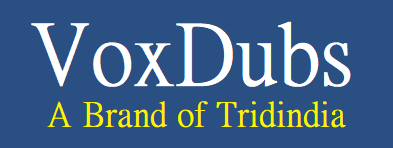When you watch a foreign film or TV show in your native language, have you ever wondered how the characters’ voices perfectly match their lip movements and emotions?
The magic lies in the hands (or rather, the vocal cords) of dubbing artists. Dubbing artists play a crucial role in bringing content to new audiences by providing synchronized voiceovers in different languages.
In this blog, we’ll take a closer look at the fascinating world of dubbing artists and the skills they possess to make on-screen magic happen.
1- Voice Acting Skills
At the heart of a dubbing artist’s work lies their exceptional voice acting skills.
They must be versatile and capable of portraying various characters, from heroes and villains to comedians and dramatic figures.
Voice actors use their voices to convey emotions, personalities, and traits of the characters they are dubbing, making the audience forget that the original actors spoke a different language.
2- Lip-Syncing and Timing
One of the most challenging aspects of dubbing is ensuring that the dubbed audio matches the lip movements of the on-screen characters.
Dubbing artists master the skill of lip-syncing, where they carefully observe the original performance and sync their dubbed lines to match the characters’ mouth movements perfectly.
This requires a keen sense of timing and precision.
3- Language Proficiency
Dubbing artists need to be fluent in both the original language of the content and the language they are dubbing into.
Fluency helps them capture the essence of the original dialogue and adapt it smoothly to the target language while preserving the intent and emotions.
4- Emotion and Expression
Effective dubbing goes beyond just translating words.
Dubbing artists must imbue their performances with the appropriate emotions and expressions to ensure that the characters connect with the audience emotionally.
This skill is vital in maintaining the impact and authenticity of the content in the new language.
5- Adaptation and Localization
Localization is a crucial part of a dubbing artist’s job.
They must adapt cultural references, jokes, and expressions to make them relevant and relatable to the target audience.
This requires an understanding of the cultural nuances and sensibilities of both the source and target languages.
6- Aural Awareness
Dubbing artists have a keen aural awareness, enabling them to adjust their vocal tones, pitches, and cadences to match the original actors’ performances.
This skill is vital for creating a seamless and immersive experience for the audience.
7- Versatility in Genres
Dubbing artists often work on various genres, including movies, TV shows, animations, documentaries, advertisements, and more.
Their ability to adapt their voices and acting styles to suit different genres allows them to cater to a wide range of content.
8- Teamwork and Direction
Dubbing artists often work closely with dubbing directors and sound engineers to ensure the final product meets the desired quality.
They must be open to direction and collaborative in their approach to deliver the best possible performance.
Conclusion
Dubbing artists are the unsung heroes behind the scenes who enable audiences worldwide to enjoy content in their native languages.
Their exceptional voice acting skills, linguistic proficiency, lip-syncing abilities, and cultural awareness combine to create a seamless and captivating viewing experience.
The next time you watch a dubbed film or show, take a moment to appreciate the immense talent and hard work of these artists, who bring characters to life and make language barriers disappear, one voice at a time.
For more information contact VoxDubs at +91-8527599201 or grab an instant quote.
